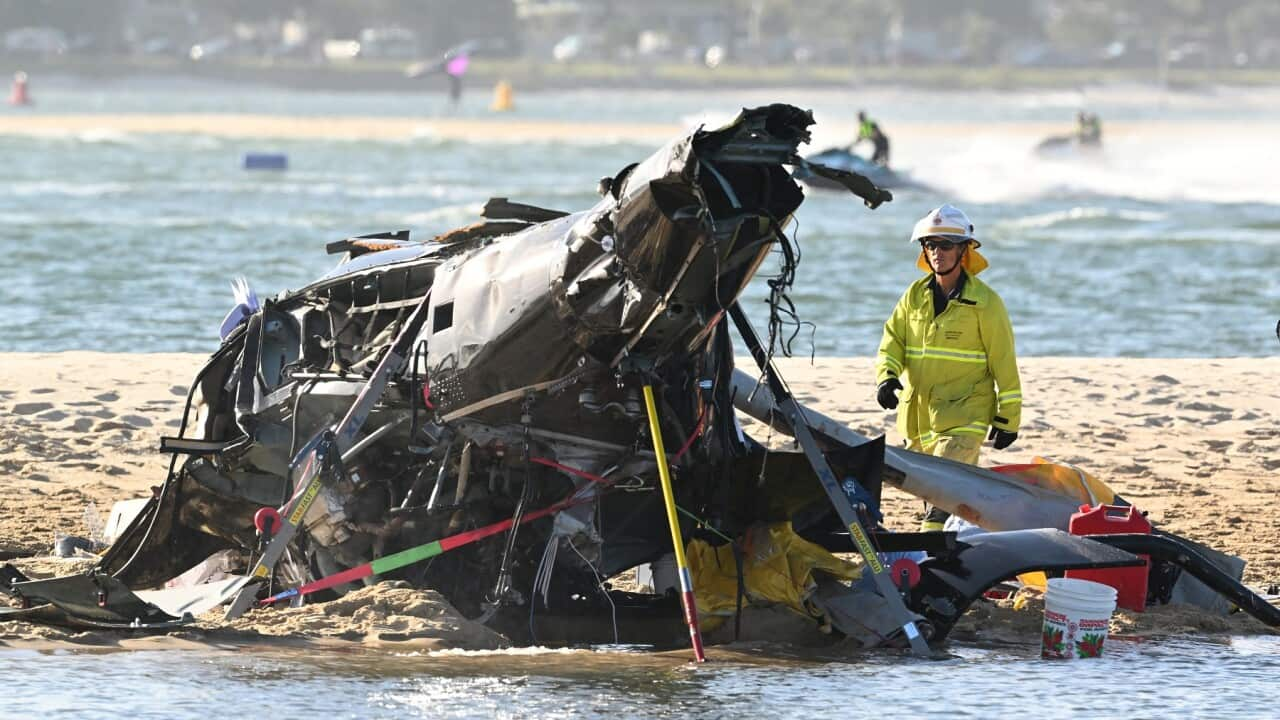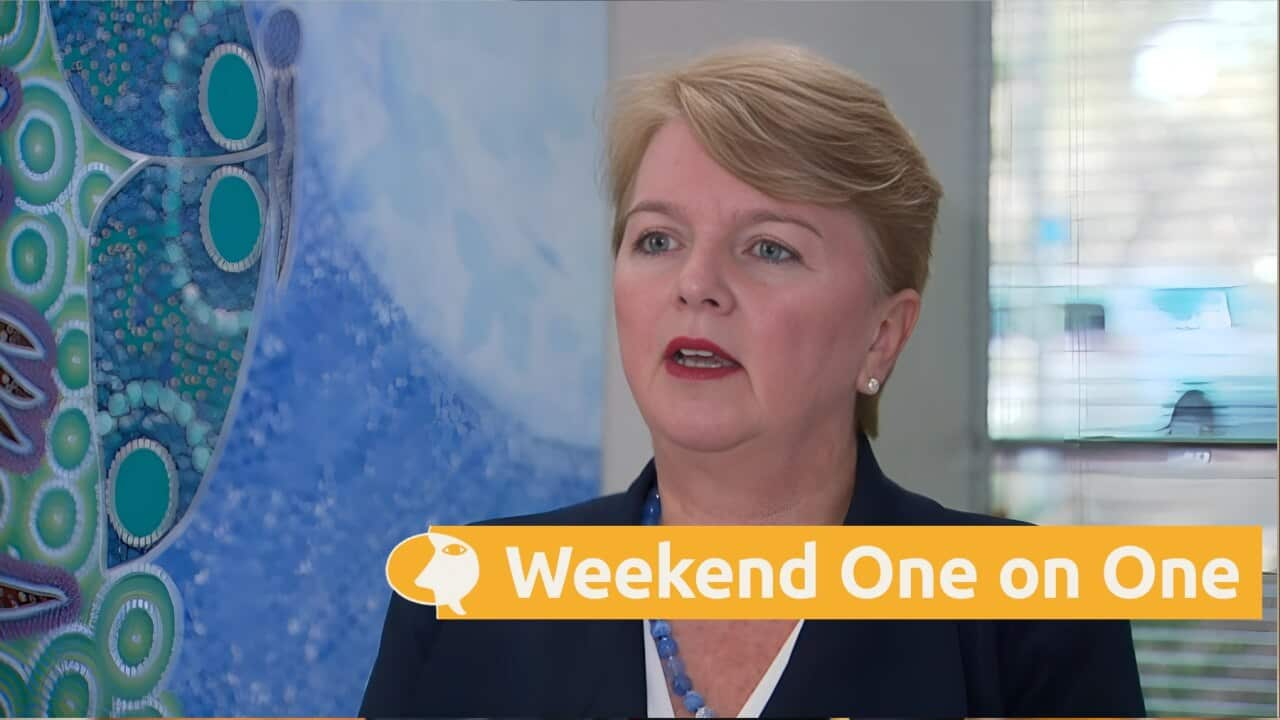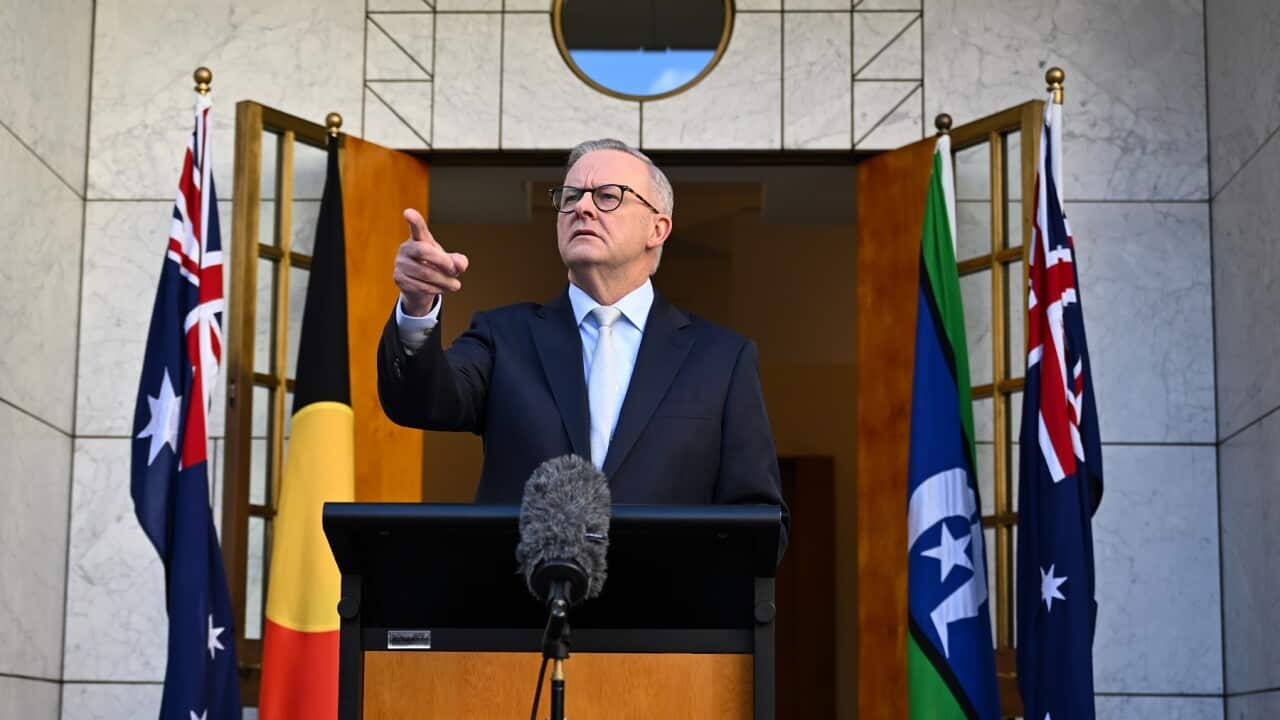A warning that this story may be distressing for some listeners.
TRANSCRIPT
It was a tragic crash between two helicopters at Sea World on the Queensland Gold Coast, that killed four people and injured nine others at the peak of the busy summer holiday season.
"Ten year old Nicholas Tadros and 9-year-old Leon de Silva, remain in intensive care in southeast Queensland hospitals after the collision near Sea World on Monday afternoon. Nicholas' mother, Vanessa Tadros, was among the four people killed in the crash, while Leon's mother, Winnie De Silva, was seriously injured. The crash also killed 40-year-old British-born pilot Ashley Jenkinson and British couple Ron and Diane Hughes.”
Now the Australian Transport Safety Bureau has handed down its final report into the crash, more than two years later.
And ATSB chief Angus Mitchell says the catastrophic mid-air helicopter collision could have been prevented.
"This has been a very complex investigation that has uncovered how a series of compounding risk failures led to a catastrophic outcome."
The investigation has found issues at Sea World Helicopters began years earlier when the ownership changed and safety protocols deteriorated.
It says nine months before the crash, the helipad locations changed, increasing the risk of a collision point.
The report also says new helicopters were introduced a week before the crash and were not fitted with company radio communications and no real-time maps of other helicopters - and that in the days before the accident, one of the helicopter's radios stopped broadcasting transmissions due to a fault with the antenna.
"One of the contributing factors was the fact that the departing helicopter was not aware of the radio call of the inbound helicopter. We also say that the inbound helicopter was not aware of the taxi-ing call made by the departing helicopter because of the radio issues."
ATSB investigators say that it is likely neither pilot knew about the faults in the radio system.
"Had those communications been in place - or had they been realised - then that certainly would have increased the likelihood that they knew another helicopter was going to be in the same space as theirs."
The report has also found that the lack of technology to identify other helicopters and the radio failures meant pilots relied entirely on a see-and-avoid strategy, but with poor visibility it led to the crash.
International aviation expert Neil Hansford says the report highlights how fundamental communication is to helicopter operations.
"You have to be able to speak, to be seen, and to be heard, to know exactly where you are. It's more critical in this operation because they don't have collision avoidance or any of the things you'd get on an ordinary aircraft."
Angus Mitchell says their investigation highlights how there must be multiple safety systems to avoid these types of incidents.
"A number of holes lined up for this accident to occur. Commercial aviation must have multiple safety defences in place. It should never be vulnerable to single point failures such as a faulty radio or pilots' ability to visually detect another aircraft in the sky."
Mr Mitchell says Sea World helicopters have rectified a number of the issues identified in the report but there is still work to be done to improve processes.
"In all our investigation has made 28 findings that highlight key safety lessons for both aviation operators and pilots."
It's understood that four of their recommendations are yet to be implemented by Sea World.
But Neil Hansford says questions need to be asked about whether it should be operating helicopters at all in the wake of the accident.
"I really question (if) the Gold Coast is the right place to run this sort of operation of 15 minute type flights. The whole business model has to be reviewed by somebody. It wasn't the job of the ATSB but it is the job of CASA who do provide the operating licence."
The findings are likely to feed into compensation claims lodged by Shine Lawyers in the Brisbane Supreme Court.
Litigation specialist Roger Singh has confirmed a lawsuit has been brought.
"I can say we're acting for several people who were on board one of the helicopters, and also others who were indelibly traumatised by what they witnessed on that day."
Mr Singh says the claims of up to $925,000 per person are for the pain and suffering caused by the crash - and the ATSB's report will inform that action.
"No amount of money can return what has been taken from the victims of this crash. However we will ensure that those responsible are held to account to the fullest extent."













